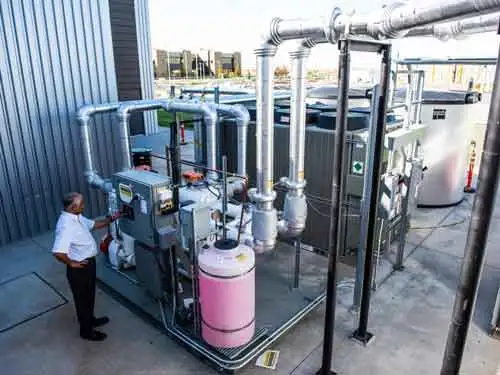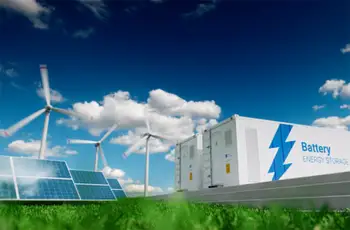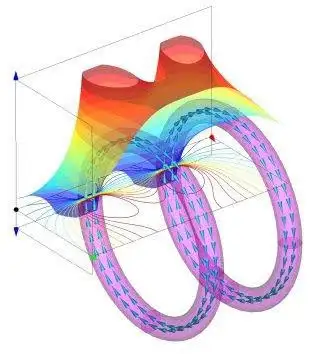Thermal Energy Storage
By R.W. Hurst, Editor

Energy Storage Systems Course
Our customized live online or in‑person group training can be delivered to your staff at your location.

- Live Online
- 12 hours Instructor-led
- Group Training Available
Download Our OSHA 4475 Fact Sheet – Being Aware of Arc Flash Hazards

- Identify root causes of arc flash incidents and contributing conditions
- Apply prevention strategies including LOTO, PPE, and testing protocols
- Understand OSHA requirements for training and equipment maintenance
Thermal energy storage stores heat or cold for later use, thereby boosting efficiency, supporting renewable energy sources, and reducing peak demand. Balancing supply and demand enhances sustainability, reliability, and energy management.
What is Thermal Energy Storage?
Thermal energy storage (TES) is the process of storing heat or cold in materials for later use, thereby stabilizing electrical systems, enhancing efficiency, and supporting the integration of renewable sources.
✅ Stores heat or cold for later use
✅ Balances electricity demand and supply
✅ Supports renewable energy integration
To understand where thermal energy storage fits within the broader picture, see our overview of 'What is Energy Storage,' which compares the technologies shaping the future grid.
Thermal energy storage is a crucial technology for enhancing efficiency and integrating renewable power sources across various types and applications. TES can enhance the efficiency of buildings, industrial processes, and power plants, while also facilitating the integration of renewable power sources into the grid. However, TES's efficiency and environmental impacts should be carefully evaluated, and sustainable storage technologies should be promoted to mitigate these concerns. The field of TES is constantly evolving, with new technologies and applications emerging, providing exciting opportunities for the future of sustainable power. Thermal energy storage is one of several innovative approaches explained in our Energy Storage Channel, which explores technologies that balance supply and demand in modern power systems.
Thermal energy storage is a process that involves storing and retrieving thermal energy (TE) for later use. It is based on the principle that heat can be converted into different forms of power, such as electricity, mechanical work, or cooling. As a result, the stored thermal energy can meet the heating, cooling, or other TE requirements, such as hot water or steam. TES systems can be used in various applications, from residential and commercial buildings to industrial processes and power generation. While thermal systems store heat or cold, a Battery Energy Storage System uses electrochemical methods to deliver a rapid power response for grid stability.
Electricity Today T&D Magazine Subscribe for FREE

- Timely insights from industry experts
- Practical solutions T&D engineers
- Free access to every issue
How is Thermal Energy Stored?
Thermal energy can be stored in different ways, depending on the type of storage medium and the application. However, the three basic thermal energy storage methods are sensible heat storage, latent heat storage, and thermochemical storage.
Sensible heat storage involves storing heat by increasing the temperature of a material, such as water or rock, thereby increasing its TE. This method is commonly used in residential and commercial buildings, where hot water tanks or heat exchangers can store excess heat from solar thermal collectors or other sources.
Latent heat storage involves storing heat by changing the phase of a material, such as from solid to liquid or from liquid to gas. Phase change materials (PCMs) are often used for this method, as they can store a large amount of power in a small volume. For example, a PCM can store excess heat during the day and release it at night, providing passive cooling for buildings.
Thermochemical storage involves storing heat through a reversible chemical reaction, where power is stored and released by altering the chemical composition of the storage medium. This method is used in large-scale applications, such as power plants, that require high temperatures and storage capacity. For large-scale applications, TES is part of the broader movement toward Long-Term Energy Storage, which helps utilities manage seasonal variations in demand and supply.
Types of Thermal Energy Storage Systems
There are various thermal energy storage systems, each with its own advantages and disadvantages in terms of efficiency, cost, and scalability. Some of the most common types are:
-
Water tanks – Simple and affordable, using insulated tanks to store hot or cold water; widely applied in buildings and HVAC systems.
-
Phase change materials (PCMs) – Store energy by changing phase (solid–liquid); effective for small-scale uses like solar thermal systems and integrated building materials.
-
Thermal oil / molten salt – High-temperature fluids used in industrial processes and concentrated solar power (CSP) plants.
-
Ice storage – Produces ice during off-peak hours for cooling during peak demand; common in commercial buildings and district cooling.
-
Aquifer storage – Stores thermal energy underground in aquifers and retrieves it via heat exchangers for district heating and cooling.
Other alternatives include Compressed Air Energy Storage, which captures and stores power as pressurized air for later electricity generation.
Efficiency and Environmental Impacts
The efficiency of thermal energy storage depends on several factors, including the type of storage medium, the temperature range, the storage capacity, and the heat transfer efficiency. In general, TES systems can achieve high efficiency, up to 90%. Additionally, they can reduce power consumption and costs by shifting electricity demand to off-peak hours, thereby reducing the need for peak power generation. Integrating TES with renewable resources complements Solar Energy Storage, ensuring a reliable power supply even when sunlight is intermittent.
Applications of Thermal Energy Storage
TES systems can be used in various applications, from residential and commercial buildings to industrial processes and power generation. Some of the most common applications are:
Heating and cooling of buildings: TES can store excess heat or cold during off-peak hours and release it during peak hours, reducing the power consumption and costs of HVAC systems.
Industrial processes: TES can store excess heat from industrial processes, such as furnaces or boilers, and reuse it for other functions, reducing power consumption and costs.
Power generation: TES can be used in power plants, such as CSP plants, to store excess heat and generate electricity during peak demand.
Transport: TES can be utilized in electric vehicles to store TE, thereby reducing the battery size and weight, and increasing the range and performance.
Promising Emerging Technologies
There are various promising emerging technologies in the field of thermal energy storage, such as:
High-temperature TES: This technology utilizes advanced materials, such as ceramics and composites, to store thermal energy at higher temperatures, up to 1000°C, thereby enabling more efficient power generation technologies, including gas turbines.
Thermochemical storage: This technology uses reversible chemical reactions, such as metal oxide reduction and oxidation, to store and release TE, providing high storage capacity and efficiency.
Sign Up for Electricity Forum’s Energy Storage Newsletter
Stay informed with our FREE Energy Storage Newsletter — get the latest news, breakthrough technologies, and expert insights, delivered straight to your inbox.
Hybrid TES: This technology combines various TES systems, including sensible and latent heat storage, to provide a more flexible and efficient solution.
Frequently Asked Questions
What are the main challenges of thermal energy storage?
Key challenges include heat loss over time, the durability of materials under high temperatures, and the cost of insulation and system integration.
How does TES compare to battery storage?
TES can often store power at a lower cost per unit than lithium-ion batteries, especially for long durations. It also avoids many supply chain issues tied to rare minerals.
What is a Carnot battery and how is it related to thermal energy storage?
A Carnot battery, or pumped-thermal energy storage, converts electricity into heat, stores it, and later reconverts it back into electricity. It offers scalability with moderate efficiency.
Related Articles








